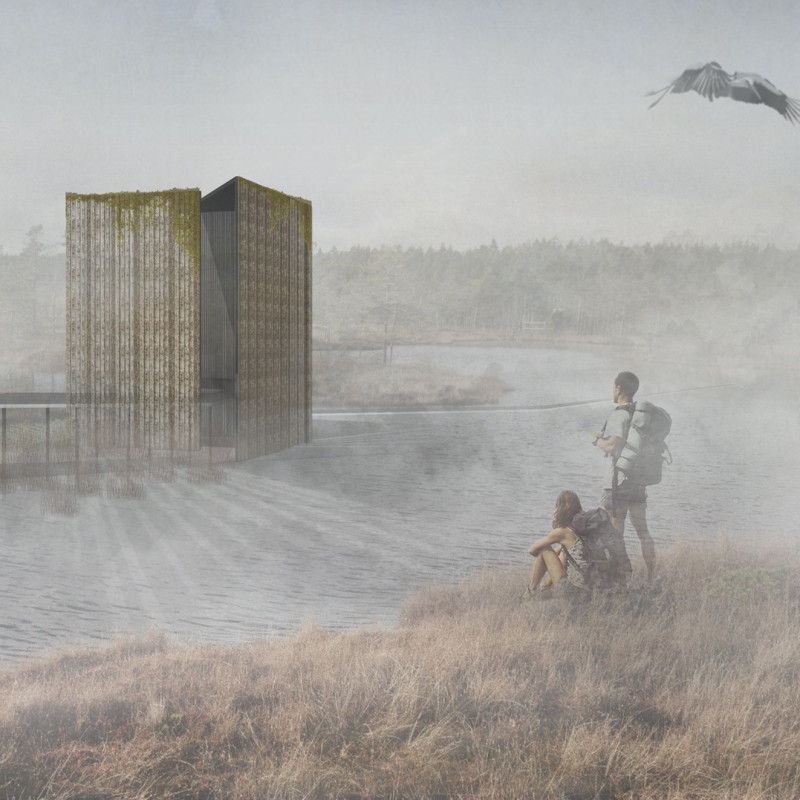5 key facts about this project
Shadows of Kemeri is located in the Kemeri landscape and is designed to create a sensory experience that goes beyond simple visual appeal. The main focus is on connecting people with the atmosphere of the area. By engaging multiple senses, the design seeks to highlight the subtle details that might otherwise go unnoticed. The goal is to integrate sound, smell, and touch into the experience, allowing visitors to connect with the environment more fully.
Sensory Engagement
At the core of the design is a sensorial box that captures various elements of the landscape. This allows visitors to engage in a rich exploration of the surroundings. The aim is to encourage interaction with the environment, moving away from a reliance on sight alone. Shadows of Kemeri promotes the idea that architecture can help people experience the unique characteristics of a place, ensuring that everyone has access to these sensory interactions.
Sunlight Movement
An important feature of the design is the consideration of sunlight throughout the day. Particular attention is given to how light changes at different times, such as 09:00, 16:00, 19:00, and 21:00. Each time offers a distinct atmosphere that can enhance the experience within the space. This awareness of light not only enriches the environment but also links the structure closely to its natural setting.
Materiality and Structure
The design incorporates local birch trees as key structural elements. Components such as the cover birch tree, structural system of birch tree, pallet of birch tree, circulation of birch tree, and pillars and diagonals of birch tree are highlighted. Using birch wood shows a commitment to sustainability and reflects local character. It creates a direct connection between the built environment and the natural landscape.
The design allows natural light to filter through while maintaining a balance with the birch trees. This thoughtful use of materials and structural elements results in an architecture that respects its environment and encourages exploration of the sensory qualities within the landscape.



























